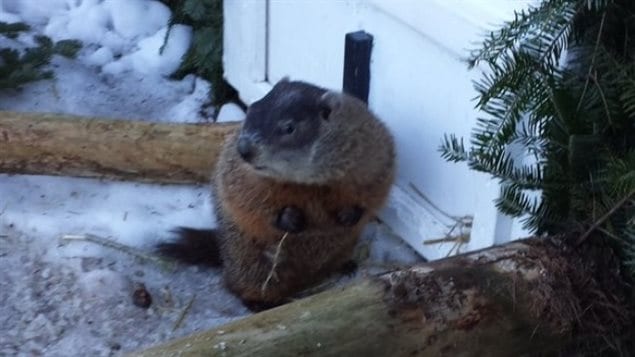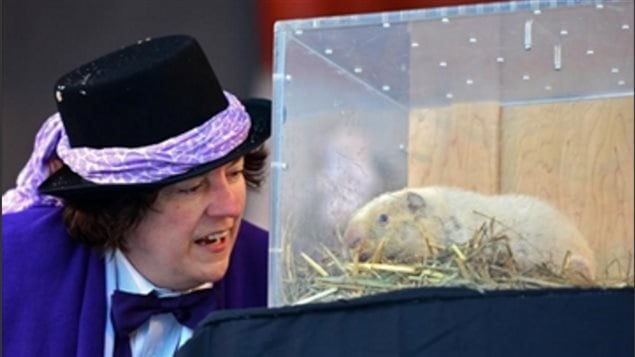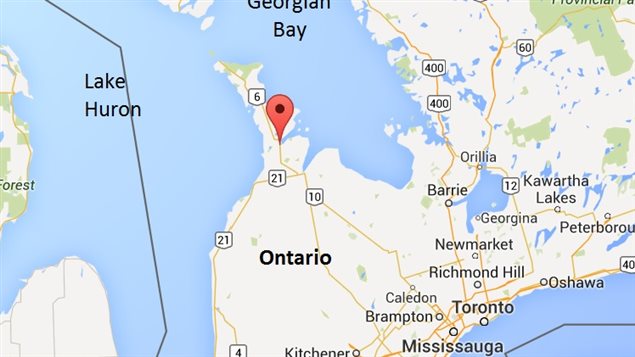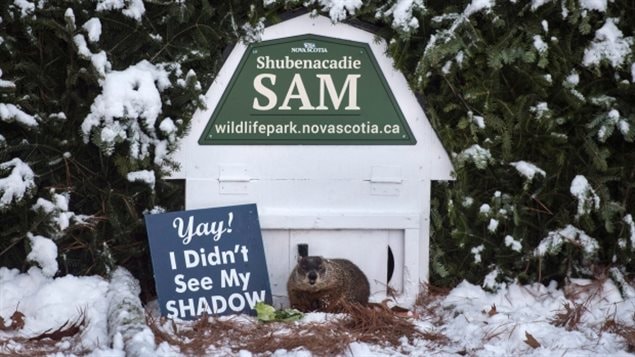It’s February 2, and that means it’s “Groundhog Day” in North America.
It’s when several marmots, specifically kept by certain towns, are awakened from their hibernation to predict the weather in coming weeks.
Sure, it’s a bit of a silly tradition and they have a 50/50 of being right, but it’s become a very popular tradition nonetheless.

Canada being a huge country, there are several groundhog prognosticators. The day starts off with Shubenacadie Sam, in a wildlife park in Shubenacadie, Nova Scotia.

The theory, is that if a groundhog emerges from his burrow from winter hibernation and sees his shadow on February 2nd, it will be scared and scurry back signalling 6 more weeks of winter. If however the day is overcast and no shadow is seen, the animal will stay out in the theory that spring is not far away (possibly in about six weeks)
This year once again Sam did not see his shadow so the crowd in Nova Scotia was delighted.
The Town Crier and spokeswoman for Shubenacadie Sam, enthusiastically announced to the early morning crowd gathered for the occasion at the Wild Life Park, “For the good news that Sam did bring, We will get an early spring”
Being on the east coast, Sam is the first groundhog that gets to predict the weather for the next several weeks.
But perhaps the most famous prognosticating rodent is in the town of Wiarton Ontario.

The tradition of Wiarton Willie, an albino marmot, began in 1956 as a bit of a barroom joke. However it has grown into a major celebration attracting sizeable crowds and a boost to the commerce of the small town.
The verdict, the Town Crier of Wiarton shouted out to the eagerly awaiting crowd, “ He feels like a king, Willie says it’s an early spring”
The tradition goes back to a Christian festival of medieval Europe where candles were lighted to celebrate the presentation of Jesus at the temple. There were also sayings in England that went something like, “”If Candlemas be fair and bright, Come, Winter, have another flight. If Candlemas brings clouds and rain, Go Winter, and come not again.”
It also has an old German connection which is very similar saying about the furry rodents, Candlemas (Feb 2), and shadows.
The celebration also has an even alder Celtic tradition, that of the Celtic celebration of Imbolc, the beginning of spring, which was also set in the first days of February.

Somehow Europeans connected hedgehogs with predictions of the arrival of spring. When European settlers came to Canada, where there are no hedgehogs, the next best thing seemed to have been groundhogs (marmots).
There is another little problem though. The tradition comes from Europe where the climate was and is typically much different than in Canada, where the winters tend to last rather longer.
As for the 50/50 chance of being right, an examination of the so-called predictions shows the furry critters have been right only about 37 percent of the time.
Still, who’s going to argue with a bit of fun in the middle of a Canadian winter, right or wrong?
Additional information -sources







For reasons beyond our control, and for an undetermined period of time, our comment section is now closed. However, our social networks remain open to your contributions.